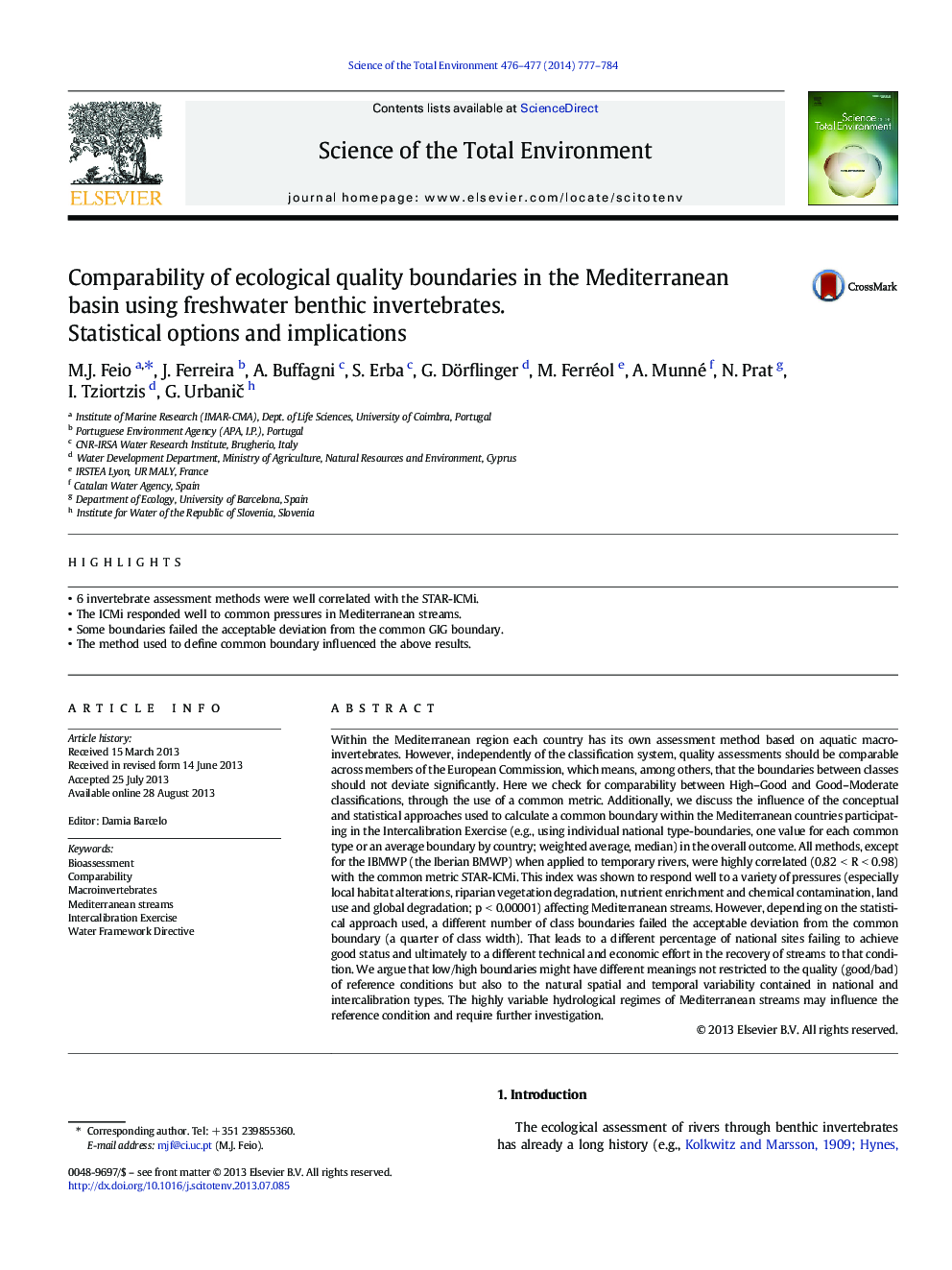| Article ID | Journal | Published Year | Pages | File Type |
|---|---|---|---|---|
| 4428592 | Science of The Total Environment | 2014 | 8 Pages |
•6 invertebrate assessment methods were well correlated with the STAR-ICMi.•The ICMi responded well to common pressures in Mediterranean streams.•Some boundaries failed the acceptable deviation from the common GIG boundary.•The method used to define common boundary influenced the above results.
Within the Mediterranean region each country has its own assessment method based on aquatic macroinvertebrates. However, independently of the classification system, quality assessments should be comparable across members of the European Commission, which means, among others, that the boundaries between classes should not deviate significantly. Here we check for comparability between High–Good and Good–Moderate classifications, through the use of a common metric. Additionally, we discuss the influence of the conceptual and statistical approaches used to calculate a common boundary within the Mediterranean countries participating in the Intercalibration Exercise (e.g., using individual national type-boundaries, one value for each common type or an average boundary by country; weighted average, median) in the overall outcome. All methods, except for the IBMWP (the Iberian BMWP) when applied to temporary rivers, were highly correlated (0.82 < R < 0.98) with the common metric STAR-ICMi. This index was shown to respond well to a variety of pressures (especially local habitat alterations, riparian vegetation degradation, nutrient enrichment and chemical contamination, land use and global degradation; p < 0.00001) affecting Mediterranean streams. However, depending on the statistical approach used, a different number of class boundaries failed the acceptable deviation from the common boundary (a quarter of class width). That leads to a different percentage of national sites failing to achieve good status and ultimately to a different technical and economic effort in the recovery of streams to that condition. We argue that low/high boundaries might have different meanings not restricted to the quality (good/bad) of reference conditions but also to the natural spatial and temporal variability contained in national and intercalibration types. The highly variable hydrological regimes of Mediterranean streams may influence the reference condition and require further investigation.
